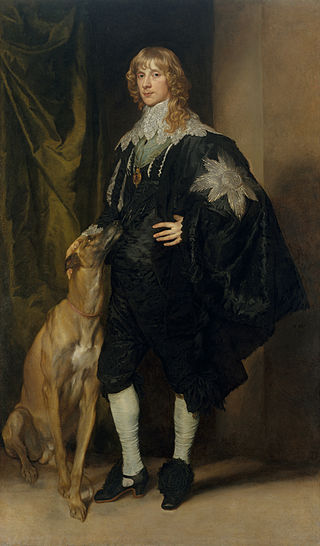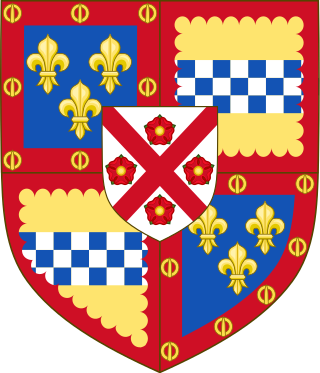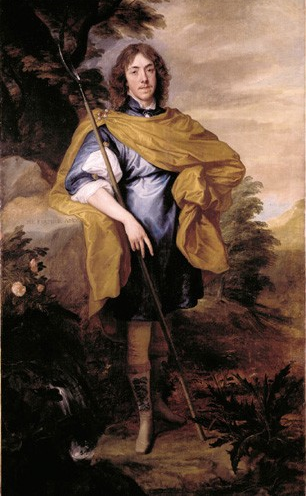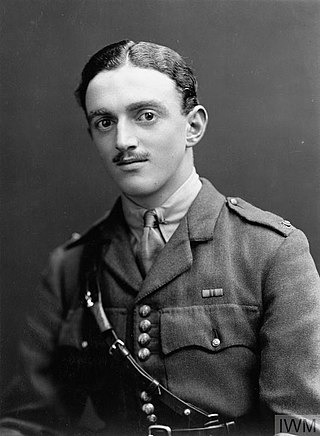| | | | | | | | | | | | | | | | |
| | | | | |
| | | | | | | | | | | | | MORMAER (EARL) OF LENNOX (1st creation), 12th century |
|
| | | | | | | | William I
(c. 1142–1214)
King of Scotland | | David
(1152–1219)
Mormaer of Lennox
Earl of Huntingdon | | Ailín I
(d. c. 1200)
possiblyMormaer of Lennox |
|
| | | | | | | | | | | | | | | | | | | | |
|
| | | | | | | | | | | | Isobel of Huntingdon
(1199–1251) | | Ailín II
(d. 1217)
Mormaer of Lennox |
|
| | | | | | | | | | | | | | | | | | | | |
|
| | | | | | | | | | | | Robert V de Brus
c. 1210–1295) | | Maol Domhnaich (Maldoven)
(d. 1250)
Mormaer of Lennox |
|
| | | | | | | | | | | | | | | | | | | | |
|
| | | | | | | | | | | | Robert VI de Brus
(1243–1304) | | Maol Choluim (Malcolm) I
(d. 1303)
Mormaer of Lennox |
|
| | | | | | | | | | | | | | | | | | | | |
|
| | | | | | | | | | | | Robert I
(1274–1329)
King of Scotland | | Maol Choluim (Malcolm) II
(d. 1333)
Mormaer of Lennox |
|
| | | | | | | | | | | | | | | | | | | | |
|
| | | | | | | | | | | | Marjorie Bruce
(1296–1316) | | Domhnall (Donald)
(d. 1365)
Mormaer of Lennox |
|
| | | | | | | | | | | | | | | | | | | | |
|
King Edward III
(1312–1377) | | | | | | | | | | Robert II
(1316–1390)
King of Scotland | | Margaret
Countess of Lennox (?) | | Walter of Faslane
de factoMormaer of Lennox
(Great-grandson of Mormaer Ailín II through the male line.) |
| |
| | | | | | | | | | | | | | | | | | Resigned, 1385 | | |
|
| EARL OF RICHMOND (5th creation), 1342 | | | | | | | | | | | | | | | | | | | | | | | | |
| | | | | | | |
John of Gaunt
(1340–1399)
Earl of Richmond
Duke of Lancaster | | | | | | | | | | Robert III
(1337–1406)
King of Scots | | Robert Stewart
(c. 1340–1420)
Duke of Albany | | Donnchadh
(1385–1425)
Mormaer of Lennox |
|
| Earldom of Richmond (5th creation) surrendered, 1372 | | | | | | | | | | | | | | | | | | | | | | | |
|
| | | | | | | | | | | | | | | | | | | | | | | | | | | |
| | | | |
Henry IV
(1367–1413)
King of England | | John Beaufort
(1373–1410)
Earl of Somerset | | | | | | | | | | | Murdoch Stewart
(1362-1425)
Duke of Albany | | Isabella
(d. 1458)
Countess of Lennox |
|
| | | | | | | | | | | | | | | | | | | | | | | | Earldom of Lennox (1st creation) extinct, 1458 |
| | | | | | | | | | | | | |
| EARL OF RICHMOND (6th creation), 1414 | | | | | | | EARL OF HUNTLY , 1445 | | | | | | | | | | |
|
John of Lancaster
(1389–1435)
Duke of Bedford
Earl of Richmond | | John Beaufort
(c. 1403–1444)
Duke of Somerset | | Alexander Seton (Gordon)
(d. 1470)
1st Earl of Huntly | | King James I of Scots
(1394–1437) | | Joan Beaufort
(c. 1404–1445) | | James Stewart
(c. 1399 – c. 1451)
Black Knight of Lorn | |
| | | |
| Earldom of Richmond (6th creation) extinct, 1435 | | | | | | | | | | | | | | | | | | | | | | |
|
| | | | | | | | | | | | | | | | | | | | | | | | | | | | | | | | | |
| | | | | | | | | | | | |
| EARL OF RICHMOND (7th creation), 1452 | | | | | | | | | | | | | | | | | | | | | | EARL OF LENNOX (2nd creation), 1488 | | | | | |
|
Edmund Tudor
(1430–1456)
1st Earl of Richmond | | Margaret Beaufort
(1443–1509) | | George Gordon
(d. 1501)
2nd Earl of Huntly | | Annabella of Scotland (c.1433–1509) | | King James II of Scotland
(1430–1460) | | John Stewart
1st Earl of Lennox
(bef. 1430–1495) | | John Stewart
(c. 1440–1512)
Earl of Atholl |
| | | |
| | | | | | | | | | | | | | | | | | | | | | | | | | | | | | | | | | |
| | | | | | | | | | | | | | | | | |
Henry Tudor
(1457–1509)
2nd Earl of Richmond
King Henry VII | | | | | | | | | | | King James III of Scotland
(1451–1488) | | Mary Stewart
(1453–1488) | | | | | | | | | | |
|
| Earldom of Richmond (7th creation) merged into the Crown, 1509 | | | | | | | | | | | | | | | | | | | | | | | | | | | | | | |
| | | | | |
| | | | | | | | | | | | | | | | | | | Elizabeth Hamilton | | Matthew Stewart
(1460–1513)
2nd Earl of Lennox | | | | | |
| |
| | | | | | | | | | | | | | | | | | | | | | | | | | | | | | | | | |
| | | | | | | | | | | | | | | | | |
King Henry VIII
(1491–1547) | | Alexander Gordon
(d. 1524)
3rd Earl of Huntly | | King James IV of Scots
(1473–1513) | | Margaret Tudor
(1489–1541) | | Archibald Douglas
(1489–1557)
Earl of Angus | | John Stewart
(c. 1490–1526)
3rd Earl of Lennox | | Elizabeth Stewart | |
| | | | | |
| illegitimate | | | | | | | illegitimate | | | | | | | | | | | | | | | | | |
|
| | | | | | | | | | | | | | | | | | | | | | | | | | | | | | | | | | | |
| | | | | | | | | | | | | | |
| | | | | John Gordon
(d. 1517)
Lord Gordon | | Margaret Stewart
(b. 1498) | | | | | | | | | | | | | | | | | | | | | |
| |
| | | | | | | | | | | | | | | | | | | | | | | | | | | | | | | | | | |
| | | |
| DUKE OF RICHMOND AND SOMERSET , 1525 | | | | | | | | | | | | | | | | | | | | | | | EARL OF LENNOX (4th creation), 1578 | | | | | |
| | | |
Henry Fitzroy
(1519–1536)
Duke of Richmond and Somerset | | George Gordon
(1514–1562)
4th Earl of Huntly | | King James V of Scotland
(1512–1542) | | Margaret Douglas
(1515–1578) | | Matthew Stewart
(1516–1571)
4th Earl of Lennox | | Robert Stewart
Earl of Lennox
Earl of March
(c. 1522–1586) | | John Stewart
(d. 1567)
6th Seigneur d'Aubigny |
| |
| Dukedom of Richmond and Somerset extinct, 1536 | | | | | | | | | | | | | | | | | Earldom of Lennox (2nd creation) merged with crown, 1571 | | Earldom of Lennox (4th creation) "exchanged" for the Earldom of March, 1580 | | | | | |
|
| | | | | | | | | | | | | | | | | | | | | | | | | | | | | | | | |
| | | | | |
| | | | | | | | | | | | | | | | | | | EARL OF LENNOX (3rd creation), c. 1571 | | | | | | EARL OF LENNOX (5th creation), 1580
DUKE OF LENNOX (1st creation), 1581 | |
|
| | | | George Gordon
(d. 1576)
5th Earl of Huntly | | Mary, Queen of Scots
(1542–1587) | | Henry Stuart
(1545–1567)
Lord Darnley | | Charles Stuart
(1557–1576)
Earl of Lennox | | | | | | Esmé Stewart
(1542–1583)
Earl of Lennox, 1st Duke of Lennox, 7th Seigneur d'Aubigny | |
| |
| | | | | | | | | | | | | | | | | | | Earldom of Lennox (3rd creation) extinct, 1576 | | | | | | | | | | |
| | | | | | | | | |
| | | | | | | | | | | | | | | | | | | | | | DUKE OF RICHMOND (1st creation), 1623 | | | | | |
|
| | | | George Gordon
(1562–1636)
6th Earl of Huntly, 1st Marquess of Huntly | | King James VI & I
(1566–1625) | | | | | | | | | | Ludovic Stewart
(1574–1623)
2nd Duke of Lennox, 1st Duke of Richmond | | Esmé Stewart
(1579–1624)
3rd Duke of Lennox, 7th Seigneur d'Aubigny | |
|
| | | | | | | | | | | | | | | | | | | | | | | | | | | | | | |
| | | | | |
| | | | | | | | | | | | | | | | | | | | | | DUKE OF RICHMOND (2nd creation), 1641 | | | | | |
|
| | | | George Gordon
2nd Marquess of Huntly (c. 1592–1649) | | Charles I
(1600–1649) | | | | | | | | | | James Stewart
(1612–1655)
4th Duke of Lennox, 1st Duke of Richmond | | George Stewart
(1619–1642)
9th Seigneur d'Aubigny | |
|
| | | | | | | | | | | | | | | | | | | | | | | | | | | | | | | |
| | | | | | | | | | | | | |
| | | | | | | | | | | | | | DUKE OF AUBIGNY (France), 1684 | | EARL OF ABOYNE , 1660 | | | | | | | | | | |
|
| | | | Lewis Gordon
3rd Marquess of Huntly
(c. 1626–1653) | | King Charles II
(1630–1685) | | Louise de Kérousaille
(1649–1734)
Duchess of Portsmouth, Duchess of Aubigny
| | Charles Gordon
(c. 1638–1681)
1st Earl of Aboyne | | Esmé Stewart
(1649–1660)
5th Duke of Lennox, 2nd Duke of Richmond | | Charles Stewart
(1639–1672)
6th Duke of Lennox, 3rd Duke of Richmond, 11th Seigneur d'Aubigny | |
| |
| | | | | | | | | | | | | | | | | | | | | | | | | | | | Dukedoms of Lennox and Richmond extinct, 1672 |
| | | |
| | | | | | | | | illegitimate | | | | | | | | |
|
| | | | | | | | | | | | | | | | | | | | | |
|
| | | | DUKE OF GORDON (1st creation), 1684 | | DUKE OF RICHMOND (3rd creation), 1675, DUKE OF LENNOX (2nd creation), 1675 | | | | | | | | | |
|
| | | | George Gordon
4th Marquess of Huntly, 1st Duke of Gordon | | Charles Lennox
(1672–1723)
1st Duke of Richmond, 1st Duke of Lennox, 1st Duke of Aubigny | | | | | | Charles Gordon
(c. 1670–1702)
2nd Earl of Aboyne |
|
| | | | | | | | | | | | | | | | | | | | | |
|
| | | | | | | | | | | | | | | | | | | | | |
|
| | | | Alexander Gordon
(1720–1752)
2nd Duke of Gordon, 5th Marquess of Huntly | | Charles Lennox
(1701–1750)
2nd Duke of Richmond, 2nd Duke of Lennox, 2nd Duke of Aubigny | | | | | | John Gordon
(d. 1732)
3rd Earl of Aboyne |
|
| | | | | | | | | | | | | | | | | | | | | | |
| | | | |
| | | | Cosmo George Gordon
(1720–1752)
3rd Duke of Gordon, 6th Marquess of Huntly | | Charles Lennox
(1735–1806)
3rd Duke of Richmond, 3rd Duke of Lennox, 3rd Duke of Aubigny | | George Lennox
(1737–1805) | | Charles Gordon
(c. 1726–1794)
4th Earl of Aboyne | |
|
| | | | | | | | | | | | | | | | | | | | | |
|
| | | | Alexander Gordon
(1743–1827)
4th Duke of Gordon, 7th Marquess of Huntly | | | | | | | | | | | | | | |
|
| | | | | | | | | | | | | | | | | | | | | | |
| | | | |
| | | | George Duncan Gordon
(1770–1836)
5th Duke of Gordon, 8th Marquess of Huntly | | Lady Charlotte Gordon
(1768–1842) | | Charles Lennox
(1764–1819)
4th Duke of Richmond, 4th Duke of Lennox, 4th Duke of Aubigny | | George Gordon
(1761–1853)
5th Earl of Aboyne
9th Marquess of Huntly |
| |
| | | | Dukedom of Gordon extinct, 1836 | | | | | | | | | | | | | | | |
| | |
| | | | | | | | | | | | Charles Gordon-Lennox
(1791–1860)
5th Duke of Richmond, 5th Duke of Lennox, 5th Duke of Aubigny | | Charles Gordon
(1792–1863)
10th Marquess of Huntly |
|
| | | | | | | | | | | | | | | | | | | | |
|
| | | | | | | | | | | | DUKE OF GORDON (2nd creation), 1876 | | | | | |
|
| | | | | | | | | | | | Charles Henry Gordon-Lennox
(1818–1903)
6th Duke of Richmond, 6th Duke of Lennox, 1st Duke of Gordon, 6th Duke of Aubigny | | | | | |
|
| | | | | | | | | | | | | | | | | | | | | | | | | |
| | | | |
| | | | | | | | | | | | Charles Henry Gordon-Lennox
(1845–1928)
7th Duke of Richmond, 7th Duke of Lennox, 2nd Duke of Gordon, 7th Duke of Aubigny | | Charles Gordon
(1847–1937)
11th Marquess of Huntly | | Granville Armyne Gordon
(1856–1907) |
|
| | | | | | | | | | | | | | | | | | | | | | | | |
|
| | | | | | | | | | | | Charles Henry Gordon-Lennox
(1870–1935)
8th Duke of Richmond, 8th Duke of Lennox, 8th Duke of Aubigny, 3rd Duke of Gordon | | | | | | Granville Cecil Douglas Gordon
(1883–1930) |
|
| | | | | | | | | | | | | | | | | | | | | | | | | |
| | | | |
| | | | | | | | | | | | Charles Henry Gordon-Lennox
(1899–1919)
Lord Settrington | | Frederick Charles Gordon-Lennox
(1904–1989)
9th Duke of Richmond, 9th Duke of Lennox, 9th Duke of Aubigny, 4th Duke of Gordon | | Douglas Charles Lindsey Gordon
(1908–1987)
12th Marquess of Huntly |
|
| | | | | | | | | | | | | | | | | | | | | | | | |
|
| | | | | | | | | | | | | | | | Charles Henry Gordon-Lennox
(1929–2017)
10th Duke of Richmond, 10th Duke of Lennox, 10th Duke of Aubigny, 5th Duke of Gordon | | | | | |
|
| | | | | | | | | | | | | | | | | | | | | | | | |
|
| | | | | | | | | | | | | | | | Charles Gordon-Lennox
(b. 1955)
11th Duke of Richmond, 11th Duke of Lennox, 11th Duke of Aubigny, 6th Duke of Gordon | | Granville Charles Gomer Gordon
(b. 1944)
13th Marquess of Huntly |
|
| | | | | | | | | | | | | | | | | | | | | | | | |
|
| | | | | | | | | | | | | | | | Charles Henry Gordon-Lennox
(b. 1994)
Earl of March and Kinrara | | Alastair Gordon
(b. 1973)
Earl of Aboyne |
|






















